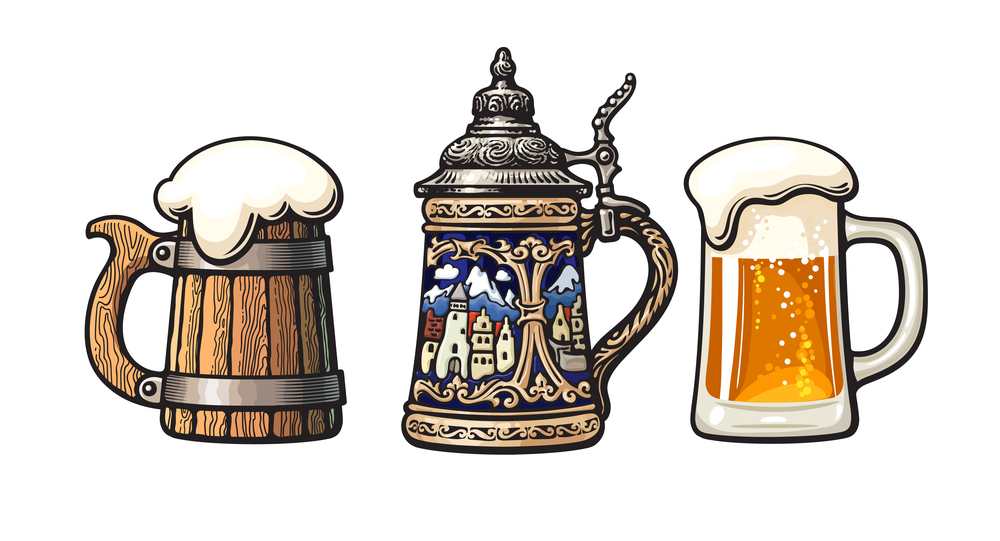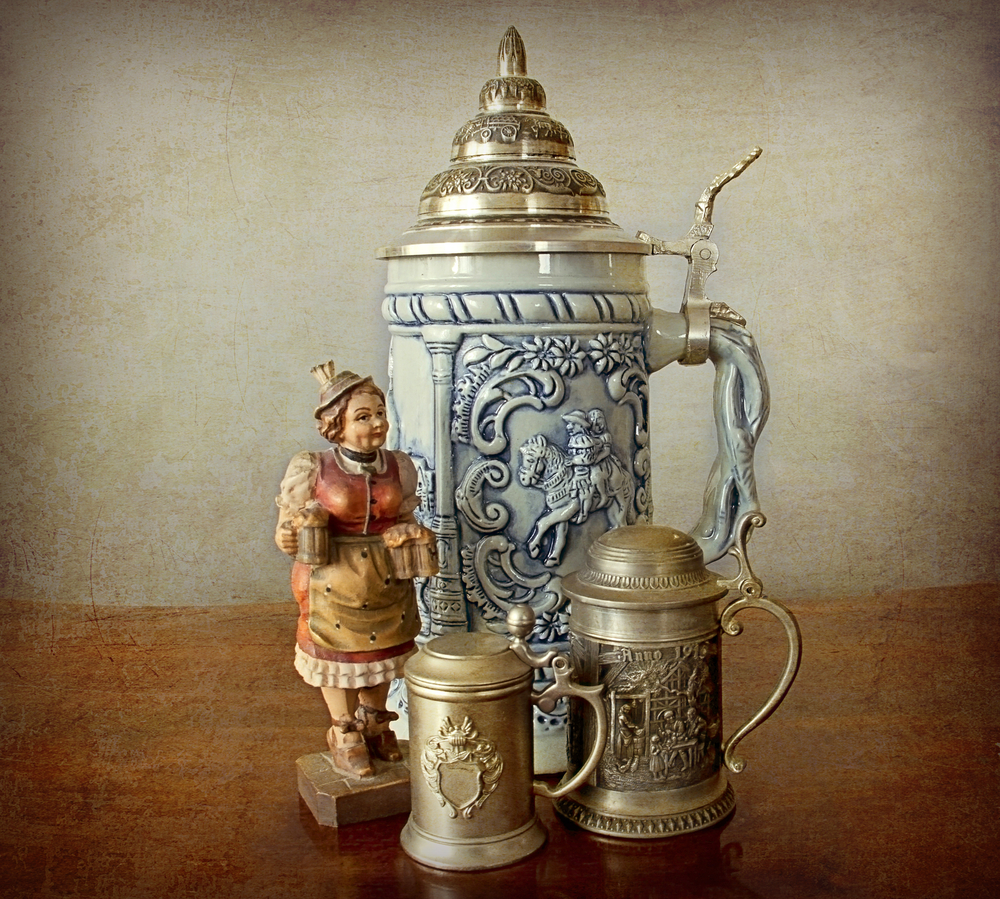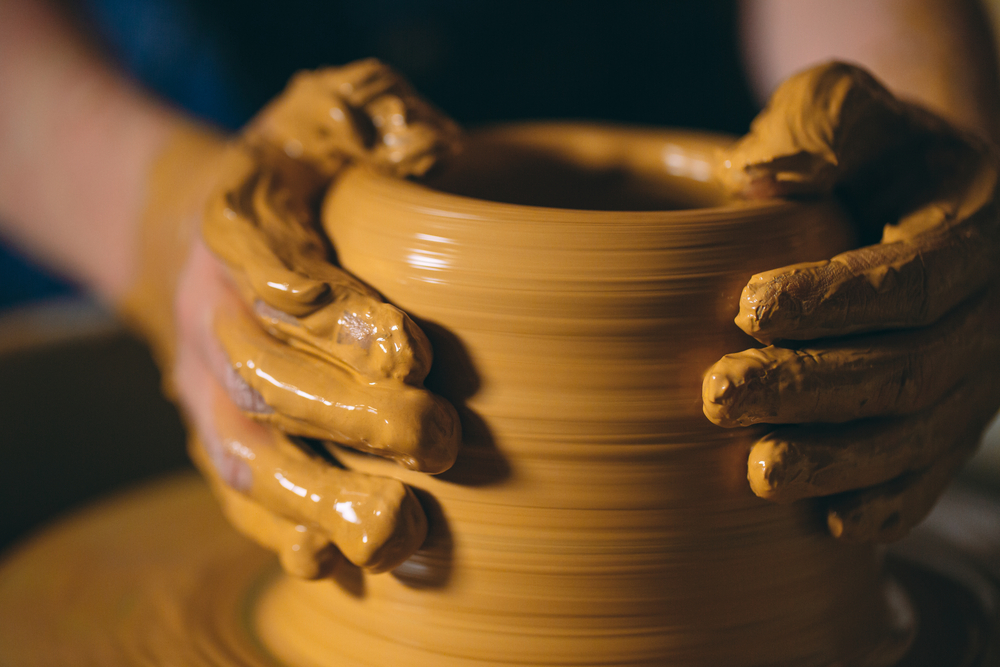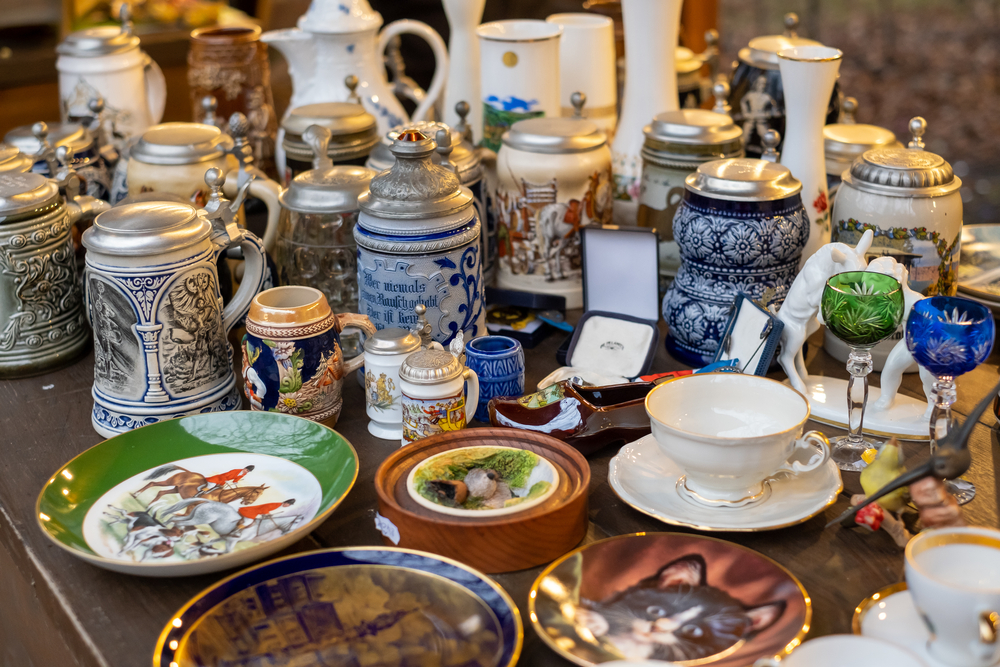
Identifying Valuable German Beer Stein Markings
German beer steins have infatuated drinkers since the 14th century when these beautiful mugs were first created. The steins are renowned for their colorful and often intricate artwork, their unique shapes and iconic lids, plus the fact that they’re so much fun to collect and drink from!
Even more than fun, certain German beer steins are actually worth a lot of money. Some steins are sold for hundreds if not thousands of dollars to hobbyists, while others are so valuable they’re sold to private collectors or museums.
These valuable steins are generally older, feature unique and recognized artwork, and are made from certain iconic materials. Whether you’re shopping in Germany, ordering online, or discovering new steins in your attic or at a garage sale, this guide will help you instantly recognize valuable German beer stein markings with ease!
Valuable German Beer Stein Markings
There are two main things that make a German beer stein valuable: age and quality. The older it is, the more valuable it is likely to be, and if it’s in good shape, then it’s likely worth quite a lot. However, most steins don’t have production dates written on them, and that’s why you need to know about the most common markings that indicate quality and worth.
The Materials of a Valuable German Beer Stein

If your beer stein is valuable, it’s likely made of porcelain, white clay, glass, or pewter. Most of these steins will have a pewter lid as well, although some may use porcelain depending on the region. Of course, many modern mugs will utilize these materials as well, so you’ll need to dig a bit deeper to see if it’s older and worth more.
A real pewter lid should be darker on the outside than on the inside. If both tones are the same, then it’s likely a more modern mug or the lid is not entirely pewter. When looking at the mug itself, pay attention to whether it’s made from a single material or a combination of materials. A valuable stein will usually utilize one single material for the mug, and then pewter for the lid. For example, if your stein combines both glass and porcelain, it’s likely more modern and not particularly valuable.
As for the lid, most pre-WWII lids were made with pewter molds that had multiple molds, where modern lids are generally made from a single mold. You can look on the lid for signs of welding to see if it’s singular or has multiple components.
A Heavy and Valuable German Stein
An authentic German beer stein should be quite heavy in your hand. Cheaper mugs may use hollow molds to save on materials, whereas pricier and older mugs will be fairly solid and firm. Depending on the size, your mug should weigh anywhere from 2 to 5lbs or more! The mug should feel sturdy to indicate a quality build, and the lid should be in working order as well to preserve its value.
The Coloration and Imperfections on Expensive Beer Steins
Minor imperfections are a key when discovering whether a German beer stein is authentic and possibly valuable. It’s important to know that even the most modern steins can be imperfect, but it’s the way they’re imperfect that makes a difference.
Think of a mass-produced t-shirt with a screen printed design. It may arrive with a few pixels missing, and as you wear it and wash it, the image starts to fade over time. In the case of modern steins, where images are often screen printed as well, you’ll notice that there are only missing pixels of color as opposed to true hand-made imperfections.
Imperfections made by hand will feature paint lines overlapping or going over the edges. You may notice the color getting duller towards the end of a brush stroke, or maybe a red line is drawn over a blue line which slightly mixes the colors.
It can be hard to see at first, but if you keep the t-shirt example in mind, you’ll start to see which German beer steins are hand-drawn, and which are printed en masse. If it’s hand drawn, it’s likely more valuable, and its value will likely increase with its age as well.
Note that all imperfections should be from the original manufacturing, and not from the subsequent storage and handling of the stein. You want the stein to be in working order. If it’s chipped, broken in any way, or has even been repaired, it will lose value as a result.
The Feel of the Stein

Run your fingers along a beer stein and feel for any imperfections in the paint, carvings, or moldings. Some imperfections include paint bubbles that are raised in the design, and non-symmetrical shapes where the hand-made carvings are imperfect. Just like the colorings, this isn’t a surefire technique, but a more modern stein made by a machine will often be smoother and without unique imperfections.
Remember: if it’s handmade, it’s likely more valuable.
Bumps on the Stein Handle
Modern German beer steins often have a bump on the top of the handle from the lid, but this is a more recent trend that started in the 1900’s. While many historic lids do have bumps, either for design or for lifting, most historic steins feature smooth handles without the added bumps from the lid.
If your stein features a smooth and even handle, then it’s likely from a long time ago!
The Carvings, Paintings, and Designs of Expensive German Beer Steins

Many historical German beer steins feature Biblical tales along with local legends of knights, tradesmen, townsfolk, leaders, and even animals like pigs and sheep. Some indicate battles, while others portray angels and prophets, especially during the Renaissance era. Sometimes, the stein wished to tell a simple story. If you have a mug with these designs and it matches the other criteria on this list, then it may be quite valuable.
In some cases, historic steins simply featured flowers or other beautiful designs. They range from mosaics of spring flowers to the most intricate moldings, and both can be quite valuable depending on the era it was made.
One way to tell apart modern mugs from historical ones is the modern inclusion of nudity. Many modern steins made for tourists will have lewd subjects, while historical steins generally did not.
If you find carvings without paint, and the mug is made from either tan clay or white clay, then it may be worth quite a lot! Some steins from hundreds of years ago were a bit more primitive in design, and while most of these mugs are either lost in time or already in museums, they occasionally pop up in storage rooms across the world.
Made in Germany, and Gemacht in Deutschland

Nearly all modern steins will say, “Made in Germany” or “Gemacht in Deutschland,” but these phrases could also date your mug back to 1887, which is when these markings were required on exported steins. Any mug made beforehand will likely not have a marking, although some historical ones do have dates and locations regarding the production.
If you happen to find a “Made in West Germany” marking, then you’re holding onto a unique Cold War-era mug that is possibly valuable but most definitely cool!
What to Look for in Fake German Beer Steins Markings
If you’re looking to buy a historic or valuable German beer stein, you want to watch out for some signs of forgery. All of the previous tips will help, but you can also check to make sure the stein wasn’t broken and reassembled in any way before purchasing. Check for cracks, glues, or even different materials to see if it’s been altered. If the lid seems newer than the mug, or some of the paint is much brighter than other colors, it may have been tampered with.
Another possible sign of forgery is a clearly written date on the stein. Most historical steins are without dates of production, although there are some cases where the date has been etched into the mug.